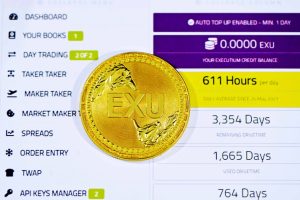Forex, or the foreign exchange market, is a global marketplace where currencies are traded 24 hours a day, five days a week. Due to the global nature of forex, traders must take into account the differences in time zones between various countries and regions. Time zones in forex refer to the difference in local time between two regions where forex trading takes place.
The forex market operates 24 hours a day, but not all trading sessions are equal in terms of liquidity and volatility. Trading sessions are divided into three main regions: the Asian-Pacific region, the European region, and the North American region. Each region has its own unique characteristics that traders need to be aware of, including the time zone differences.
The Asian-Pacific region, also known as the Asian session, is the first major trading session of the day. It begins at 11:00 PM GMT on Sunday and ends at 8:00 AM GMT on Monday. This session is dominated by trading activity in Japan, China, Australia, and New Zealand. The Asian session accounts for approximately 21% of the total trading volume in the forex market.
The European region, also known as the London session, is the most active trading session of the day. It begins at 7:00 AM GMT and ends at 4:00 PM GMT. This session is dominated by trading activity in the United Kingdom, Germany, France, and Switzerland. The European session accounts for approximately 38% of the total trading volume in the forex market.
The North American region, also known as the New York session, is the final major trading session of the day. It begins at 12:00 PM GMT and ends at 9:00 PM GMT. This session is dominated by trading activity in the United States and Canada. The North American session accounts for approximately 31% of the total trading volume in the forex market.
The time zone differences between these regions can have a significant impact on forex trading. Traders need to be aware of the opening and closing times of each session, as well as the overlap between sessions. The most active trading period occurs during the overlap of the European and North American sessions, which is between 12:00 PM GMT and 4:00 PM GMT.
The time zone differences can also impact the release of economic data and news events. Economic data releases, such as employment reports and GDP figures, are typically released during the trading sessions of the countries where the data originates. Traders need to be aware of these release times and adjust their trading strategies accordingly.
In addition to the regional trading sessions, there are also individual trading sessions for specific countries. For example, the Japanese Yen is most active during the Asian session, while the British Pound is most active during the London session. Traders need to be aware of these individual sessions and adjust their trading strategies accordingly.
To summarize, the time zone differences in forex refer to the difference in local time between two regions where forex trading takes place. Traders need to be aware of the opening and closing times of each trading session, as well as the overlap between sessions. Economic data releases and individual trading sessions for specific countries also need to be taken into account. By understanding the time zone differences, traders can develop effective trading strategies and take advantage of the opportunities presented by the global forex market.





